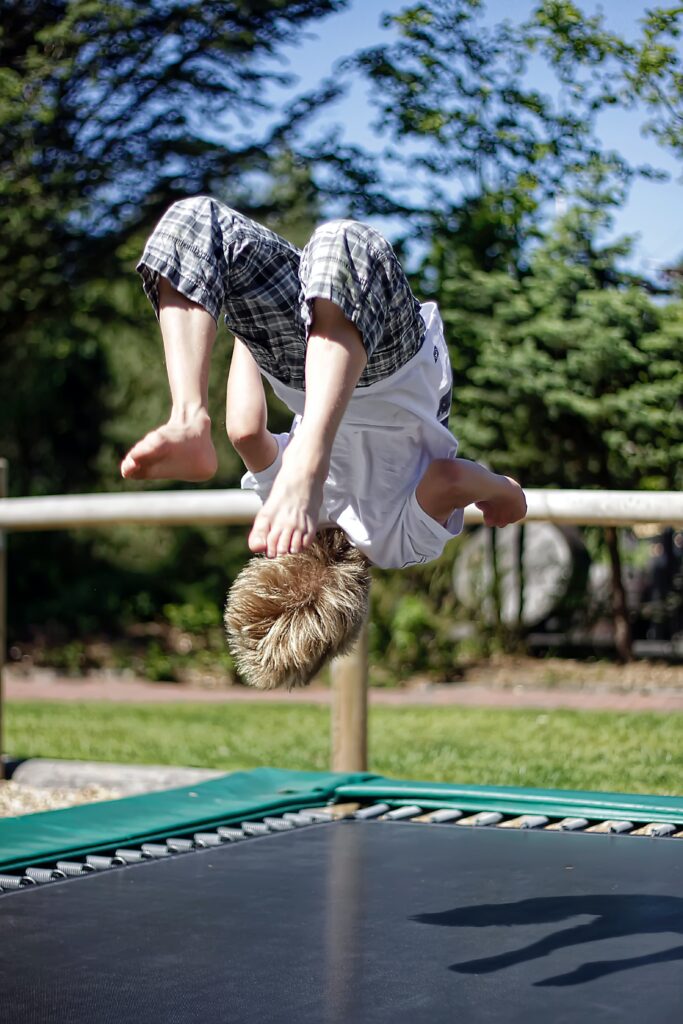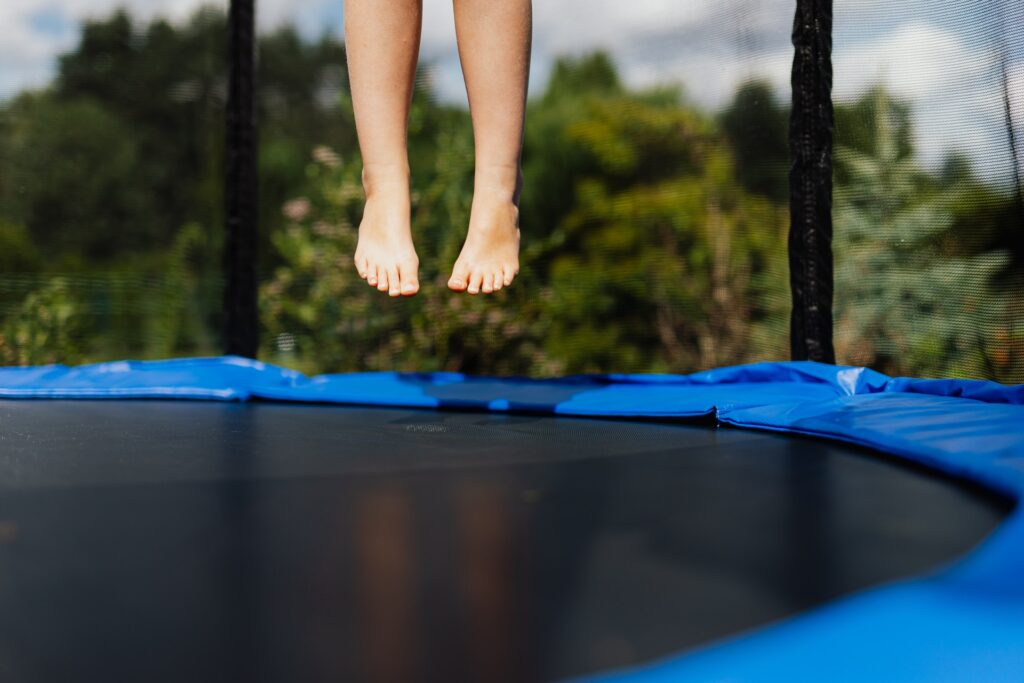How To Level A Trampoline? Complete Leveling Guide
Trampolines are great fun for people of all ages. When the trampoline is not level, it will annoy all who use it. Unlevel trampolines are also unsafe, as you are more likely to be injured when your feet hit the ground at odd angles. It is always best to learn how to level a trampoline before it becomes a hazard or an annoyance.
What you need to know:
Trampolines are made out of elastic bands so that they can stretch slightly. This means that the trampoline will not be perfectly level all the time, but it can become unlevel quite quickly.

Trampolines are the most level when they are new. The longer it is used, the more unlevel it becomes. Keep this in mind if you suspect that your trampoline is unlevel and is not becoming so over time.
Why did Trampoline become Unlevel?
There are several reasons why a trampoline may become unlevel:
The legs may have been unevenly tightened at the factory. If this occurs, you should find a different way to level your trampoline. Do not attempt to loosen or tighten the legs yourself, as it can be dangerous if done incorrectly.
Many people who own trampolines are unaware of properly centering the legs over the frame. This can cause a substantial amount of unleveled. If you suspect that your trampoline is becoming more and more uneven despite all efforts to level it, you should center the legs before going any further.

The mat may have shifted. This is usually due to having too many people on the trampoline at once, but it can also occur over time as the elastic bands wear away.
The fabric of the trampoline may be worn out or damaged. Of course, this would need to be replaced before attempting any other leveling methods. The mat may be damaged. This means the elastic bands are not holding the mat in place as they should, and it will need to be replaced if this is the case.
How To Check If Your Trampoline Is Level?
If your trampoline is unlevel, you will likely be able to tell by looking at it. The mat should hang down about 2 inches on every side. If this is not the case, your trampoline may be unlevel, or there could be another problem causing this.
You can also check the surface underneath your trampoline. If it is raised in patches, your trampoline may be unlevel. The same will go if any dips or holes are present on this surface; it could be a sign of an unlevel trampoline.

You can also check something known as the “rock test”. Bounce up and down on the trampoline with your hands against the frame. You will most likely feel one or two of the legs move more than usual. Check the surface underneath to see unevenly lowered in these areas. There are usually no other problems associated with this method.
How To Level A Trampoline? [4 Methods]
Leveling a trampoline can be done using the following methods:
Dig a Trench:
If the legs have been unevenly tightened, digging a trench will provide enough space to level them. Mark out areas in front of and behind each leg about the same distance from the center mark. Dig out these areas until you have created a trench around all four legs, about 3 inches deep and 1 foot wide. You can also make these trenches larger if it does not provide enough leveling space.
After creating the trenches, place sandbags or cinder blocks behind each leg using the same method as above, fill in any crevices around the sandbag with more sand to keep it in place and prevent slipping.
Place Sandbags or Blocks:
If your trampoline has been slowly becoming unlevel over time, the elastic bands are likely wearing down. This can cause various problems, such as incorrect leg placement and uneven mat distribution.
The best way to fix this problem is to place sandbags or cinder blocks behind each leg, starting with the one on the side where you think your trampoline is most unlevel. Fill in crevices around each sandbag with more sand to keep it in place and prevent slipping. You might also want to put an extra sandbag behind the leg at the center point of your trampoline. This will make it easier to even out the legs if it does not provide enough leveling space.
If your trampoline is still unlevel at this point, you may need to move on to a more advanced way of leveling it. If so, continue reading below for more advanced methods.

Balance Bricks or Blocks:
This method is a higher-level way of leveling a trampoline. It can also be beneficial if your trampoline center has been turned into a makeshift brick or block store, which is quite common in the Philippines.
If you have cinder blocks or bricks available, place them around the frame with no legs. This should provide enough weight to help balance out your trampoline. You can also use other heavy objects for this purpose, such as metal bars or large rocks.
If you do not have any of these objects available or are too hard to transport, this method may still be helpful. Purchase some bricks or cinder blocks at a construction supply store and bring them to where you are keeping your trampoline.
Trampoline Leveler:
This is a new product on the market designed to level trampolines. It consists of several metal legs that can be placed under each of your trampoline’s legs. They are adjustable, so you can change how high or low each leg sits on the ground. This should allow for easy leveling with minimum effort required from you.
The trampoline leveler is also very portable, making it useful for people who often move. It can be easily folded up and stored in most sheds or garages, allowing you to bring it along with you when you relocate. Not only does this save you money on moving costs, but it will enable you to set up your trampoline wherever you go.
Frequently Asked Questions
Conclusion
The most important thing to remember about how to level a trampoline is to fix the problem later. If you try a method that doesn’t work, move on to the next one. Leveling a trampoline is not very difficult, as long as you have the patience and time to do it.
Once you’ve leveled it using one of the methods above, be sure to lock in the leg positions using permanent fixes such as cement or stakes. This will prevent unraveling and ensure that your trampoline is ready to be used by you and your family for many years.
Read More:
How To Put A Net On A Trampoline?
How Long Does It Take To Set Up A Trampoline?
